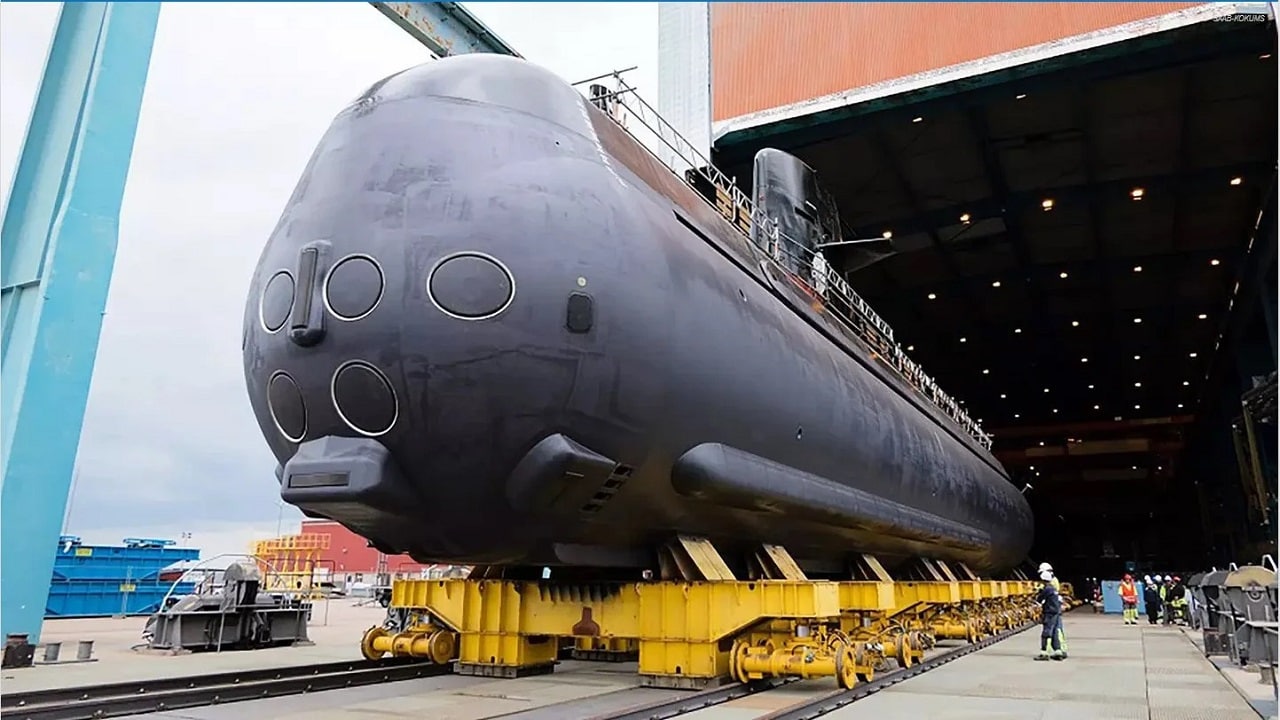Sure, when you think of countries with dominant submarine programs, you think of nations like America, Russia, China, the UK, and France. Sweden is not exactly known for its prowess under the water. That is a big, big mistake: Sweden’s industrial base is becoming more active in delivering the military hardware that can make the country a leader in readiness as it prepares to join NATO. Indeed, Saab may soon have another hit on its hands. Its next-generation submarine has come one step closer to fruition.
On June 30, the Royal Swedish Navy laid the keel of the A26 Blekinge-class submarine – the lead boat in a class of two. The Blekinge-class can stay submerged for 18 days and is bigger than the Gotlund-class, itself a formidable submarine, which the Blekinge-class will replace toward the end of the decade.
Saab Stakes Its Claim
Saab is excited about the Blekinge-class, and the company’s CEO crowed about the virtues of the new sub in an interview with Naval News.
“The submarine competence places Sweden among one of few nations in the world with the capability to build modern and advanced submarines” Saab CEO Micael Johansson said. “The ceremony is not only a milestone for HMS Blekinge, it is also proof that Sweden has regained the capability. We are looking forward to when her sister HMS Skåne will follow in her tracks.”
The Blekinge-class has a long way to go before entering service. Final delivery is not expected until 2027 or 2028. Nevertheless, the keel laying is a significant milestone along its acquisition path. It has taken five years of development to get the Blekinge to this point. The Swedish military first ordered the subs in 2015. Construction began in 2017 at the Saab Kockum’s shipyard in Karlskrona, where Sweden has built ships for 300 years.
The Swedes Are Serious About Undersea Warfare
The Swedish navy has invested $840 million into the Blekinge-class program in an effort to improve on the Cold-war era Södermanland-class of diesel electric subs.
The Blekinge-class is planned to be as silent as ever – the Swedes excel in noise cancellation technology for undersea warfare. The Blekinge is conventionally powered, but it will have flexible mountings to help reduce transient noise, withstand shocks, and lessen the chances of detection by an enemy. The sub’s frame will better absorb noise, and the air ducts and pipes will be quiet as well.
The Blekinge will be around 217 feet long. It will displace nearly 2,000 tons. These subs will also be able to sneak close to shore to insert teams of special operations forces personnel, and this “multi-mission portal” will also deploy unmanned subs. The Swedes hope the unmanned underwater vehicles use their intelligence, surveillance, and reconnaissance prowess to swim far ahead and gather targeting data for the Blekinge-class. The robotic craft can extend the range of sonar to give the manned submarine better survivability against enemy subs and destroyers. The drones can use active sonar as the Blekinge stays hidden. If an enemy detects the unmanned sub, the potential destruction of that vessel will not endanger the Blekinge, which could then stealthily exit the area of operations and live to fight another day.
Saab Has Become a Defense Powerhouse
Saab is perhaps better known for automobile production, but the firm has become an adept arms manufacturer in recent years. It has been posting more revenue and profit each quarter. Saab has a plan for what modern undersea warfare will look like during the next 20 years. While the Swedish navy will not dominate with its numbers of submarines, its unmanned subs will serve as a force multiplier. The Blekinge will be a robust and quiet boat that will help keep the Russian navy guessing in the waters of the Baltic Sea and beyond.

